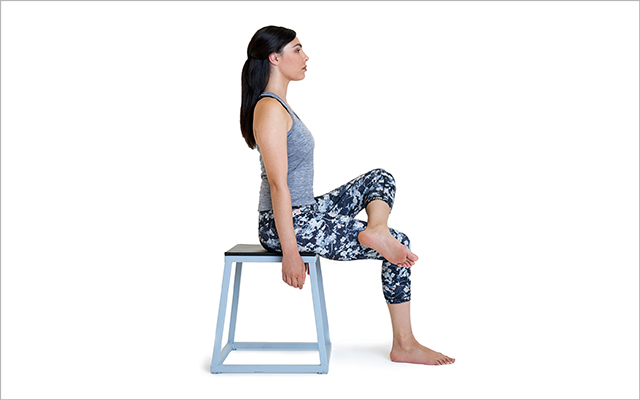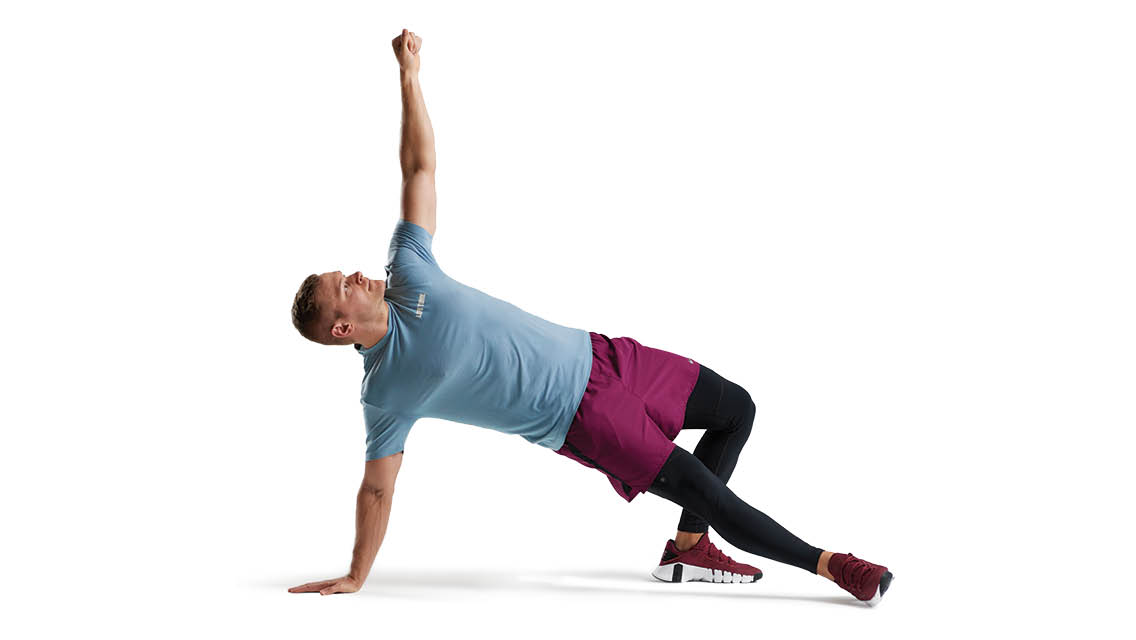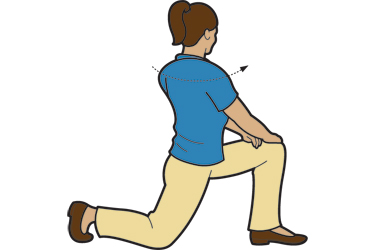Many Americans suffer from back issues at some point in their lives, yet such conditions are almost unknown in indigenous cultures. The amount of time we spend sitting has been identified as a differentiating factor, but Esther Gokhale, LAc, says it’s actually how we sit — and move, overall — that’s contributing to our back problems.
After experiencing severe back pain and failed surgery, Gokhale studied posture in places such as Brazil and India. What she learned inspired the Gokhale Method, which she outlines in her book, 8 Steps to a Pain-Free Back.
To improve your posture and ease or prevent back pain, Gokhale recommends lengthening, strengthening, and remodeling the spine.
“I believe the most natural ‘playground’ to make these changes is in everyday movements — sitting, lying, standing, bending, lifting, and walking provide ample opportunity to stretch, strengthen, and reshape the body,” she says.
Modifying the way you move — and how you position yourself when you don’t — can temper and even prevent back pain. Gokhale suggests practicing these subtle moves.
1) Roll open your shoulders: Gently move one shoulder a little forward, a little up, and a lot back, and then let it relax down. Repeat the movement with your other shoulder. After you’ve rolled both shoulders, your arms should dangle by your sides, externally rotated and farther back than usual. This will shift the soft tissue of your shoulder, improving your breathing as well as the circulation in your arms and back.
2) Alternate between “stretchsitting” and “stacksitting”: Stretchsitting relaxes the shoulders while using gentle traction to lengthen and decompress the spine. To stretchsit, place a folded towel or cushion (1-inch depth) vertically against a chair backrest between your waist and shoulder blades. Hitch your midback onto it to get a little traction. Roll open your shoulders.
Stacksitting describes an upright, relaxed, seated position with a well-positioned pelvis and stacked back. To encourage stacksitting, place a folded towel or cushion toward the back half of a chair’s seat and sit on the chair’s front edge.
3) Lengthen your spine: Take a deep breath and grow tall. Maintain the height as you exhale, and repeat. Grow even taller on the next inhale, maintaining the new height during the exhale.
Back on the Right Track: A Q&A With Esther Gokhale
Experience Life | You studied Aplomb, a French movement-reeducation technique. What did you learn?
Esther Gokhale | In the ninth month of pregnancy with my first child, I experienced excruciating back pain. I had previously had back spasms doing yoga poses but returned to an active life after each episode. This time the back pain was accompanied by sciatica. I was told the pain would go away after my baby was born, but it got worse. I couldn’t lie down for more than two hours at a time. I spent the midnight hours walking my neighborhood to alleviate the agony.
A year later, after not getting help from numerous conservative and alternative therapies, I underwent back surgery, an L5-S1 laminectomy/discectomy for a badly herniated disc. I was unable to lift or carry my baby and was advised not to have any more children. Within 12 months of the surgery, the pain returned and further surgery was recommended. At that point I decided to find my own way out of misery and began research into the causes and treatments for back pain.
That’s when I came across L’Institut d’Aplomb in Paris. Its founder, Noëlle Perez-Christiaens, questioned the explosion of back pain in industrialized cultures while people in traditional societies had virtually none. She saw that in industrialized societies we have increasingly poor posture and don’t use our bodies well, and that we can learn from traditional cultures, which retain both strength and elegance. These observations resonated with my childhood memories from growing up in India. My Dutch mother used to marvel at the ease of movement in the people there. I dedicated five years to training in Aplomb, and my back pain diminished significantly. I began to think about how the key principles of this approach could be taught more systematically to make learning more effective, efficient, and logical.
EL | How did you develop your Gokhale Method? What was your research and development process like?
ES | The Gokhale Method retained an anthropological base. I continued to research widely in Europe, Asia, Africa, and South America, observing healthy posture at first hand. For example, I spent days learning how to carry water on my head, seeing how the women doing it would naturally engage their “inner corset” for length and stability, protecting their spines. I asked a lot of questions, usually with a local translator, and documented the body wisdom I saw with photographs and video. People shared their daily lives very generously.
Back in the United States, I practiced acupuncture and started teaching some of the postural principles to patients with back pain. And they got better! I incorporated teachings from additional disciplines and continued to streamline the process. My husband, Brian, is a professor of mathematics at Stanford University, and we live on the Stanford campus. I reached out to the many physicians I knew at the Stanford medical center and other local clinics who were suffering with back and neck pain. Like many professionals, they were highly skilled but had received no training in how to stand and operate for many hours. Similarly, academics like my husband were suffering from decades of poor posture at their desks. And so word spread locally that the posture reeducation I teach is a highly effective alternative to painkillers and surgery. Over time the techniques I used gelled to create the Gokhale Method.
My book, 8 Steps to a Pain-Free Back, was published in 2008 and my DVD, Back Pain: The Primal Posture Solution, was released in 2011. I’ve trained more than 50 teachers worldwide to provide hands-on instruction in the Gokhale Method. Our teaching team continues to discover improved ways to explain, observe, and speed up the process of transforming a student’s posture.
The SpineTracker, a wearable set of sensors that our company has developed over the past five years, adds an additional layer of discovery, research, refinement, and efficiency to our processes.
EL | What kind of response have you received? Is your method generally accepted?
ES | Physicians have been the strongest allies of the Gokhale Method. They appreciate its effectiveness and its logical basis. Considering the contrarian nature of our approach, we have met with surprisingly little objection. The arguments are compelling, and the techniques work — it seems the world is ready for this paradigm shift.
EL | How is the Gokhale Method different from traditional approaches to easing back pain, and how is it more effective?
ES | The Gokhale Method introduces a paradigm shift away from the conventional S-spine shape to a J-spine. A J-spine has significantly less curvature than an S-spine in both the cervical and lumbar areas. The J-spine shape is seen in ancestral populations, young children, and indigenous people, and protects the spinal discs and nerves from strain and injury. It also accommodates a healthy position for the pelvis. There is now radiological evidence supporting that a J-spine correlates with a healthy, pain-free back, whereas an S-spine correlates with back pain.
The Gokhale Method also uses multiple channels to create postural change. We explain what we are doing, we use pictures because they are indeed sometimes worth a thousand words, and we guide students with our hands. The changes look right, feel right, and make sense. In this way, change happens more efficiently for all types of learners. With the addition of our wearable tech, we have yet another channel to facilitate and enhance learning.
EL | Do you have pet peeves about the way back health and posture are covered?
ES | It’s striking to me that just about every popular guideline on posture is not only unhelpful but counterproductive. Here is a short list of common posture notions that I consider problematic: chest out, chin up, S-spine, tuck the pelvis, crunches for ab strength, sit up straight, stand up straight, parallel feet, lumbar support, cervical pillows. As a society, we now know that we made some errors in our notions about diet; the errors we have made in posture far exceed the errors we made in diet!
I believe that, perhaps because common advice has been ineffective, the medical profession has largely ignored posture as a measure for addressing back pain. Posture simply wasn’t being approached in a useful way. Now that the Gokhale Method has formulated an effective way of improving posture and addressing back pain, the medical profession will begin to take note and refer patients to this method. They are doing so, but change in medical protocol takes a long time to implement. Posture needs to be recognized as an essential pillar of health, like good nutrition, exercise, work–life balance, etc.
EL | What do you hope to achieve through your work?
ES | Our mission is to make back pain rare.
EL | Can you describe some of the results you’ve seen? What excites you most?
ES | Every student and every success is exciting. The most common adjective people use in their feedback forms is “life-changing.” Our teachers feel very privileged to be able to shepherd that level of change for our students.
In the last few years, our students are increasingly recruiting their spouses, family members, colleagues, and walking partners to our offerings, many of which are free and easily accessible online. We are now beginning to see the synergistic effect of working on posture in groups. This is how people in villages learn. Humans are natural mimics, and posture is culturally transmitted. So we’re extremely excited to see this group effect begin to take hold.
Since the advent of our wearable SpineTracker, we’re seeing speedier learning and better understanding, and we’re able to track and research posture changes over time. The possibilities are limitless, and we are keen to see how far we can take high tech in conjunction with high touch to support people being pain free and functional for their entire lives.
EL | What are the negatives we should know? Are there people who disagree with your conclusions?
ES | The Method does not work well for people with significant dementia. It’s also difficult for very overweight people to implement some of the techniques. Apart from these conditions, the techniques seem to be universally well adopted and beneficial. We’ve had surprisingly little disagreement from laypeople, medical professionals, and even anonymous people on the internet.
EL | Do you have any tips for improving posture and easing/preventing back pain?
ES | The most general category of recommendation would be to lengthen, strengthen, and remodel the spine so that there is plenty of room for the discs and nerves to remain healthy. I believe the most natural “playground” to make these changes is in everyday movements: Sitting, lying, standing, bending, lifting, and walking provide ample opportunity to stretch, strengthen, and reshape the body. That way, everyday life provides much of our exercise and therapy. Once good habits have been learned as a part of daily life, these same habits extrapolate to the gym.
The most important thing is to take the first step toward a life free of back pain!




This Post Has 0 Comments